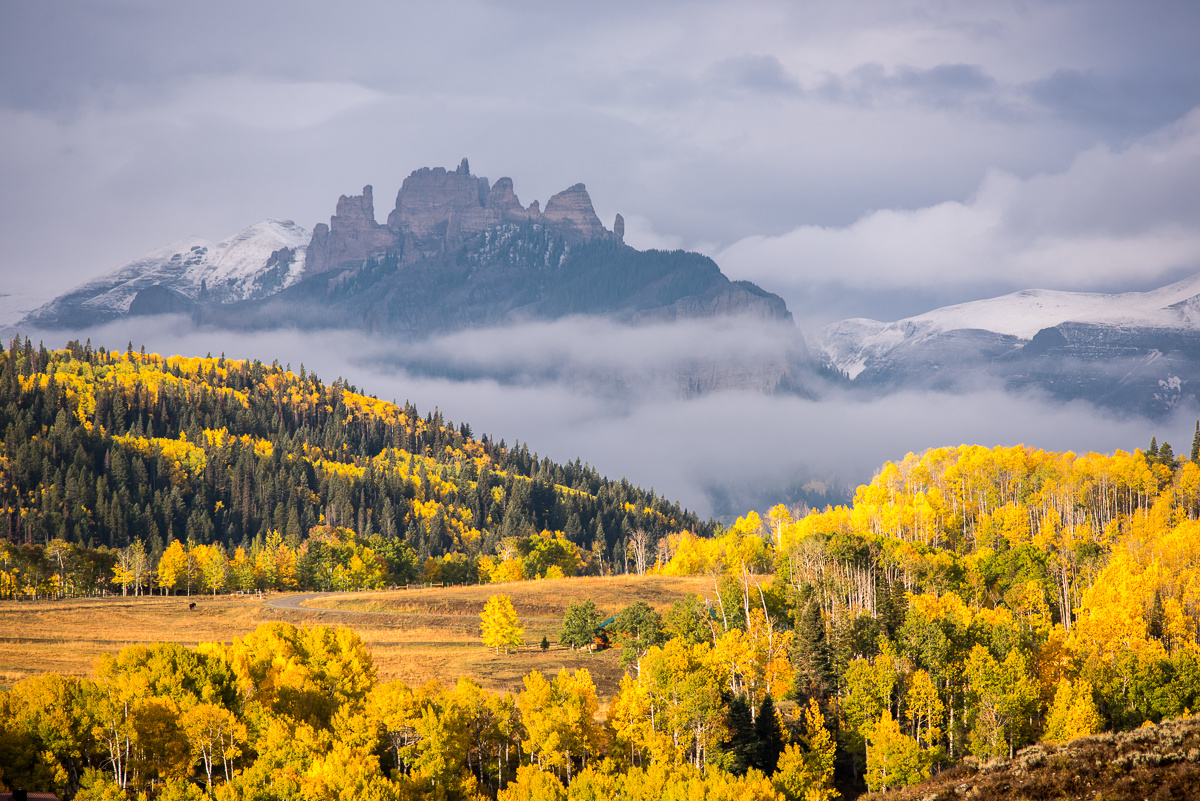Learning photography and trying to create better photographs can be a daunting task when you're just starting. Here are some guidelines I've taught in my workshops to help new photographers create stronger images.
These ideas can apply to any genre of photography, but I'm primarily a landscape photographer, so I tend to use those examples.
Pay Attention to the Whole Frame
When first starting out, it is so easy to fall into the trap of focusing so much on the thing you want to take a photograph of next that you forget to notice what else is around it in the frame. But if you want your photography to start to improve, start noticing what is in all the corners of the viewfinder. Also pay attention to the foreground, middle, and background of the scene. Your viewer wasn't there at the location with you, so the only thing you have to communicate is that two-dimensional piece of art and whatever is in the frame.
Have a Focal Point
By the focal point, I mean an element of primary interest or prominence, not just where you are focusing the lens. Sometimes in landscape photography, a clear focal point can seem a little vague. You may have an interesting mountain range, a fabulous sky full of clouds, dramatic rock formations, or all of the above. There might be lots of things going on, but in most effective landscape photography, you'll probably notice that there is something that stands out, whether it's an element that's closest to the lens or something being nicely spot-lit by the sun, etc. An established focal point or main subject makes compositional choices much easier.
Don't Try to Get It All In
When you've chosen what your focal point, it also becomes easier to decide what to leave in and what to crop out. It's so easy when you're first starting and trying to get in the entire scene. We've all done it. Say you just arrived at Zion National Park and stepped out of the car and gone to an overlook and the scene is so overwhelming that you just want to try to capture it all. In this scenario, I would offer another piece of advice. Get closer! What that means in this example is to choose an area you want to focus on and focus on that. If it's that cool tree with the way the light is hitting it and the rocks look behind it create a nice composition, work with that and don't worry about the cool clouds that are over there. You can get those in other shots. It all becomes too much, and if you try to get it all in your resulting image, lots of teeny tiny little details get lost.
But you could say: “what about all the landscape photographers that use wide angle lenses?” Yes, that is true, but if you look carefully, you'll also notice that most wide angle shots have some focal point that's close to the camera, whether it be a rock, some flowers, or whatever. There is something closer to anchor the image so that the vast distance in the background has something to contrast with. I would say this is a version of getting closer and being selective about what you do and don't put in the frame.
Look For Symmetry
Look for ways that elements of your scene repeat either literally or if one thing in the image echoes the shape of something else. This may come in the form of repeating patterns or in balancing out one aspect of the image against another that has a similar shape. Repeating patterns have a way of leading our eye and making an image less static and more interesting. It's part of why using reflections in water work so well in landscape photography.

The sunlight on the Aspen trees creates a nice leading line to the mountain
Leading Lines
Another tried and true concept is to look for leading lines. For example, pay attention to the line of that fence in your shot and try to arrange it so that it leads the eye into the frame. The same applies with a road, a river, etc. And this rule can tie in with symmetry. Repeating lines often can create leading lines. Look for them and incorporate them whenever you can.

An example of using framing to help create a focal point
Find Frames
Find ways that your main subject can be outlined or framed by something else. This can help to isolate and make stronger the thing that you want to emphasize. It might be the way overhanging branches create a frame for your main subject or it might be the way rock formations frame a subject in the distance. This is another tried and true compositional technique that can greatly enhance the quality of your images.

The contrast between the bright, clear foreground and the hazy background helps give this image extra depth and drama
Find Contrast
This is one of my favorites to teach to aspiring photographers in my workshops. Look for contrast not only between light and dark, but between warm and cool colors, or different shapes. You might even find contrast in near and far. There is almost no end to this category. But putting contrast into your images is a big part of what will help them to pop.
So, that's it. If you are someone just starting and wanting to create better landscape photos, give these tips a try and watch your images begin to improve.
If you love travel and photography, consider checking out our Photographing the World Series with Elia Locardi where we go to some of the most beautiful locations in the world and teach the process of creating world class landscape images. Save 15% by using "ARTICLE" at checkout.






